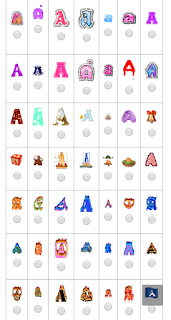The Get My Payment tool allows taxpayers to check on the status of their
stimulus payments and confirm whether the money is arriving via direct deposit or paper check. You can also enter new bank information if your direct deposit account isn’t on file.
At least in theory this is how the Get My Payment app is supposed to work. On Wednesday, April 15, the first day the service was available to the masses, people have been complaining on social media about how the app crashed or gave them frustrating messages like “Payment Status Not Available.” People are also being told to check back 24 hours later and give it a try then if their payment status is not available.
IRS Get My Payment Tool
Most people don’t need to do anything to receive their stimulus checks, which pay out up to $1,200 per adult, and $500 per child under age 17. The payment amounts are based on your adjusted gross income, as calculated in your most recent tax return, and the IRS is paying most checks via direct deposit — provided that information is already on file.
Yet in this particularly trying economic climate, where millions have lost their jobs, many people have been waiting for the IRS to offer a service letting them track their stimulus checks, similar to the tool allowing you to track your tax refund. Some taxpayers are also unsure how or when they will receive their $1,200 checks, or they seek to provide the IRS with updated direct deposit information — so that they can get their checks as soon as possible. The Get My Payment application is supposed to address all of these needs.
To use Get My Payment, go to
irs.gov/get-my-payment. You should have some information handy in advance. Specifically, you need a copy of 2019 tax return (if you’ve already filed), or a 2018 return if you haven’t done your taxes yet this year. You’ll also need your bank direct deposit information available, if you seek payment that way, as well as standard personal information, such as date of birth, Social Security number, and mailing address.
The IRS says you can find out a projected date when your deposit is scheduled to arrive in your bank account. However, if you tax return is still being processed, or if the IRS’s system fails for some other reason, you may get a message stating “Payment Status Not Available” after entering all your information.
While Get My Payment allows you to give bank direct deposit information to the IRS, you cannot change bank information with the IRS if it already has an account for you on file. Why? As the IRS explains, “To help protect against potential fraud, the tool also does not allow people to change bank account information already on file with the IRS.” You also can’t change your form of payment if the IRS has already scheduled it for delivery.
If you haven’t filed your 2019 taxes (or your 2018 returns for that matter), you might want to do that now. Many people can file federal tax returns for free, and tax-prep services like TurboTax and H&R Block are easy to use.
The Get My Payment app is strictly for people who file federal taxes. The IRS has a separate spot online where non-tax filers, including many low-income earners, can enter their information to get stimulus checks for themselves and qualifying dependents.
Who gets stimulus checks first? The Treasury Department says that the first recipients of stimulus checks — officially called “economic impact payments,” part of the $2 trillion CARES Act to provide economic relief amid the coronavirus pandemic — will be taxpayers who have already filed their 2019 (or 2018) tax returns and have provided direct deposit information to the IRS. Many, if not most, of these payments will show up in taxpayers’ bank accounts on Wednesday, April 15, and some people have already reported receiving their direct deposit checks.



Comments
Post a Comment